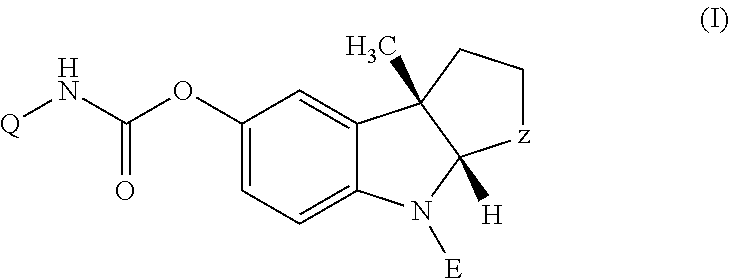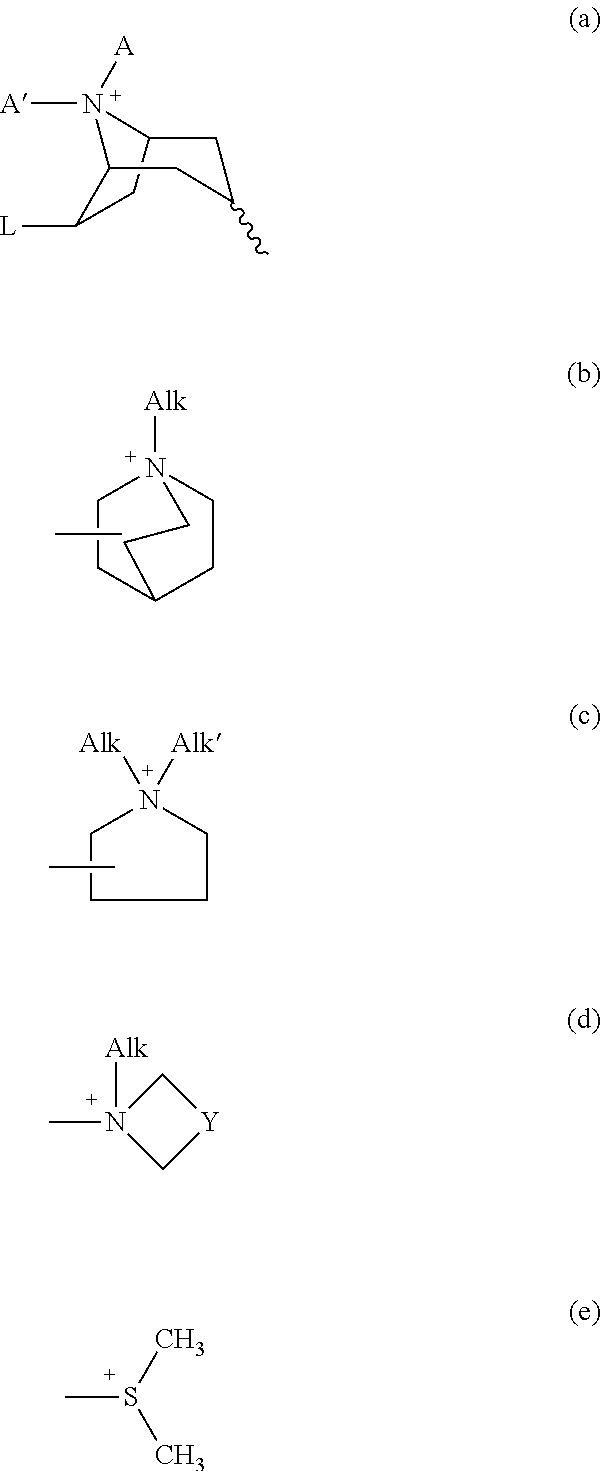Use and composition for treating dementia
a technology for dementia and composition, applied in the field of use and composition for treating dementia, can solve the problems of preventing general clinical usefulness of this application, limiting the benefit of patients suffering from these disorders, and reducing the clinical efficacy of this approach, so as to prolong the duration of drug action, improve the therapeutic effect, and achieve no significant deleterious effect on safety or tolerability
- Summary
- Abstract
- Description
- Claims
- Application Information
AI Technical Summary
Benefits of technology
Problems solved by technology
Method used
Image
Examples
example 1
Orally Disintegrating Tablets Containing 15 mg of Donepezil Hydrochloride and 20 mg of Trospium Chloride.
[0175]One and a half kilogram of donepezil hydrochloride and 1.8 kg of corn starch are mixed thoroughly until complete homogenizing of the mixture which, after a passage through a 35 mesh sieve, is added with a previously prepared mixture of 2 kg of trospium chloride, thoroughly stirred together with 2.4 kg of corn starch and sieved at 35 mesh. The mixture thus obtained is added with 0.6 kg of strawberry flavor powder, 0.2 kg of sodium saccharin, 13.08 kg of lactose, 4.4 kg of microcrystalline cellulose, and 2.9 kg of sorbitol. The mixture is mixed until complete homogenization, then it is added with 0.1 kg of magnesium stearate, mixed again and compressed with punches of 7 mm to obtain 100,000 orally disintegrating tablets having the following composition
[0176]
Donepezil hydrochloride15.00mgTrospium chloride20.00mgCorn starch42.00mgStrawberry flavor powder6.00mgSodium saccharin2....
example 2
[0177]Capsules for oral administration are prepared by mixing the following ingredients:
[0178]
IngredientsParts by weightRivastigmine (as hydrogen tartrate)900Trospium chloride2.000Lactose USP7.350Colloidal silicon dioxide (Aerosil ®)50
[0179]After mixing, the mixture is screened through a 40 mesh screen and introduced in two-piece hard gelatine capsule No. 3 containing 9 mg of rivastigmine and 20 mg of trospium chloride
example 3
[0180]Immediate release tablets for oral administration are prepared by mixing 1.8 kg of galantamine and 2.0 kg of trospium chloride, 0.25 kg of gelatin, 0.25 kg of magnesium stearate and 10 kg of corn starch and forming the mixture into tablets containing 18 mg of galantamine and 20 mg of trospium chloride by a conventional tableting machine.
PUM
| Property | Measurement | Unit |
|---|---|---|
| weight | aaaaa | aaaaa |
| plasma half life | aaaaa | aaaaa |
| temperature | aaaaa | aaaaa |
Abstract
Description
Claims
Application Information
 Login to View More
Login to View More - R&D
- Intellectual Property
- Life Sciences
- Materials
- Tech Scout
- Unparalleled Data Quality
- Higher Quality Content
- 60% Fewer Hallucinations
Browse by: Latest US Patents, China's latest patents, Technical Efficacy Thesaurus, Application Domain, Technology Topic, Popular Technical Reports.
© 2025 PatSnap. All rights reserved.Legal|Privacy policy|Modern Slavery Act Transparency Statement|Sitemap|About US| Contact US: help@patsnap.com



